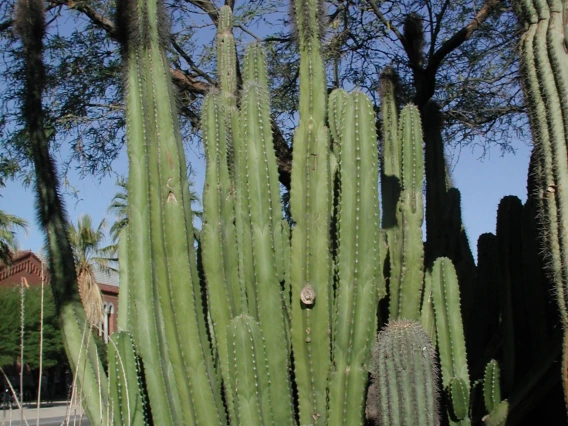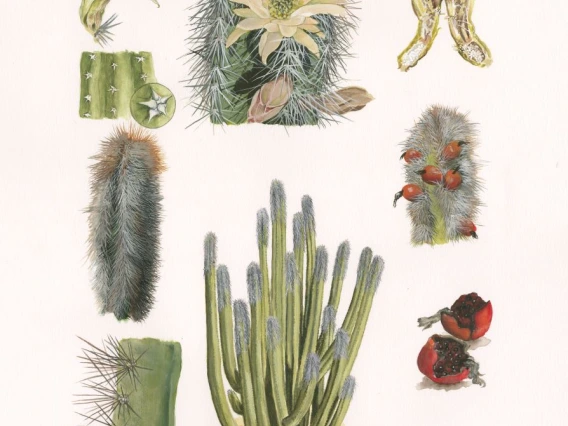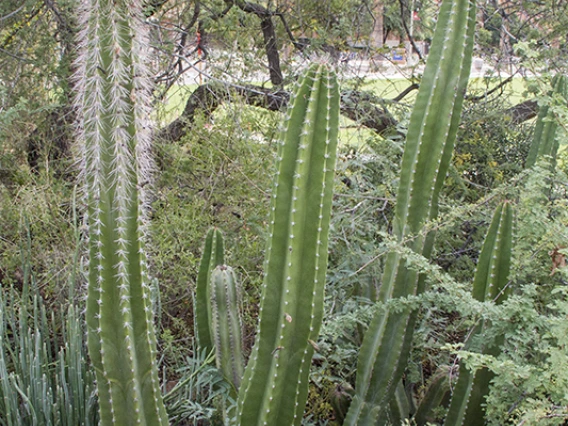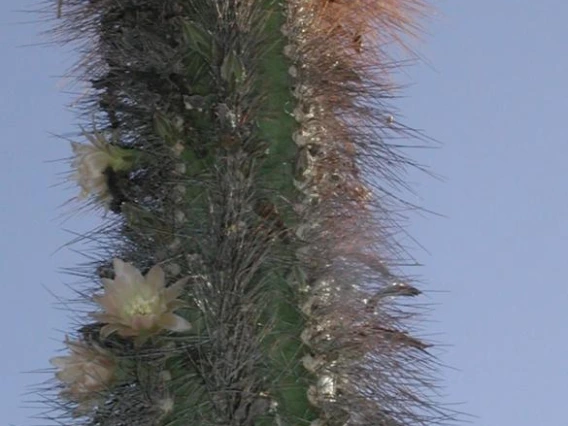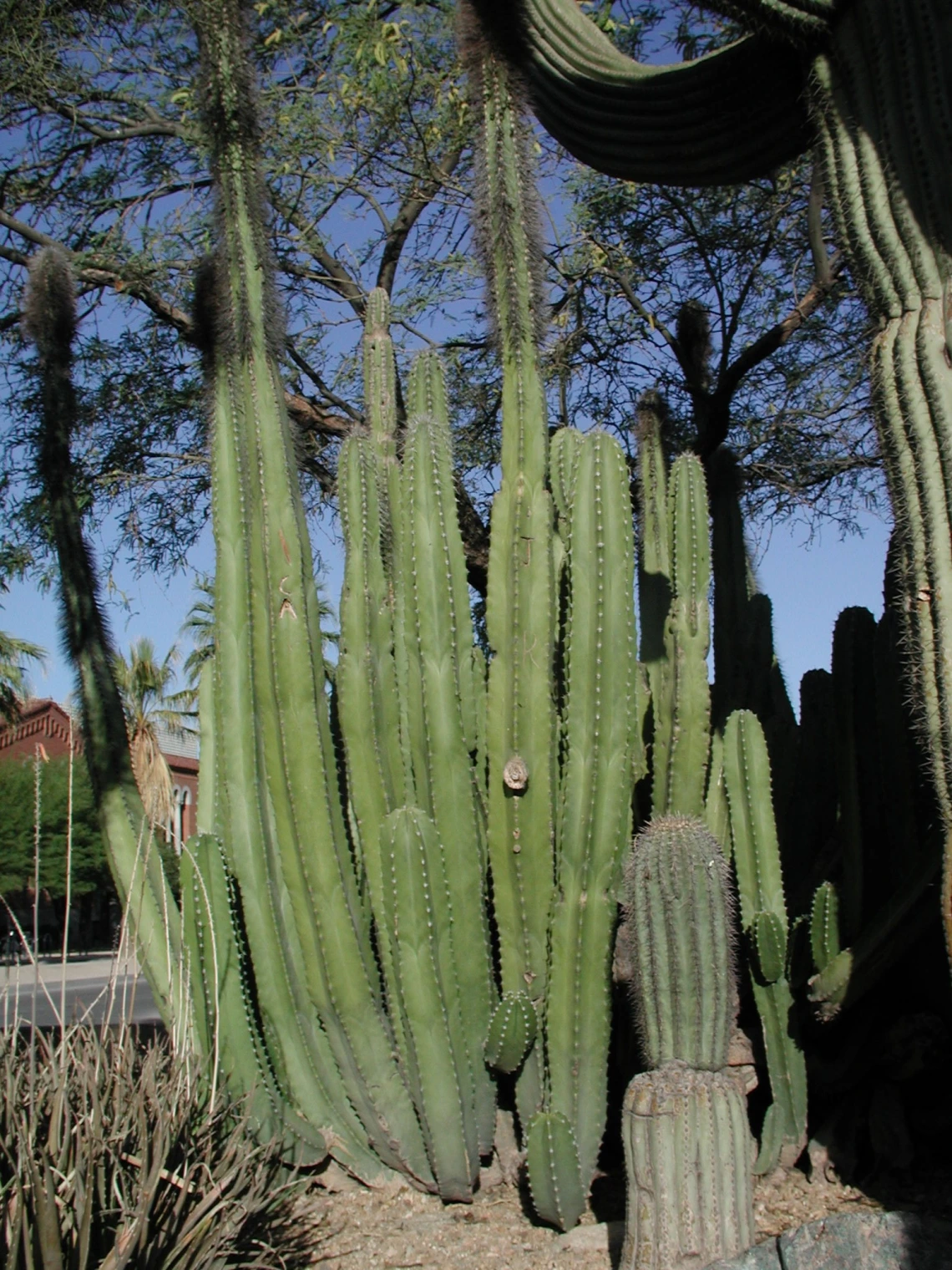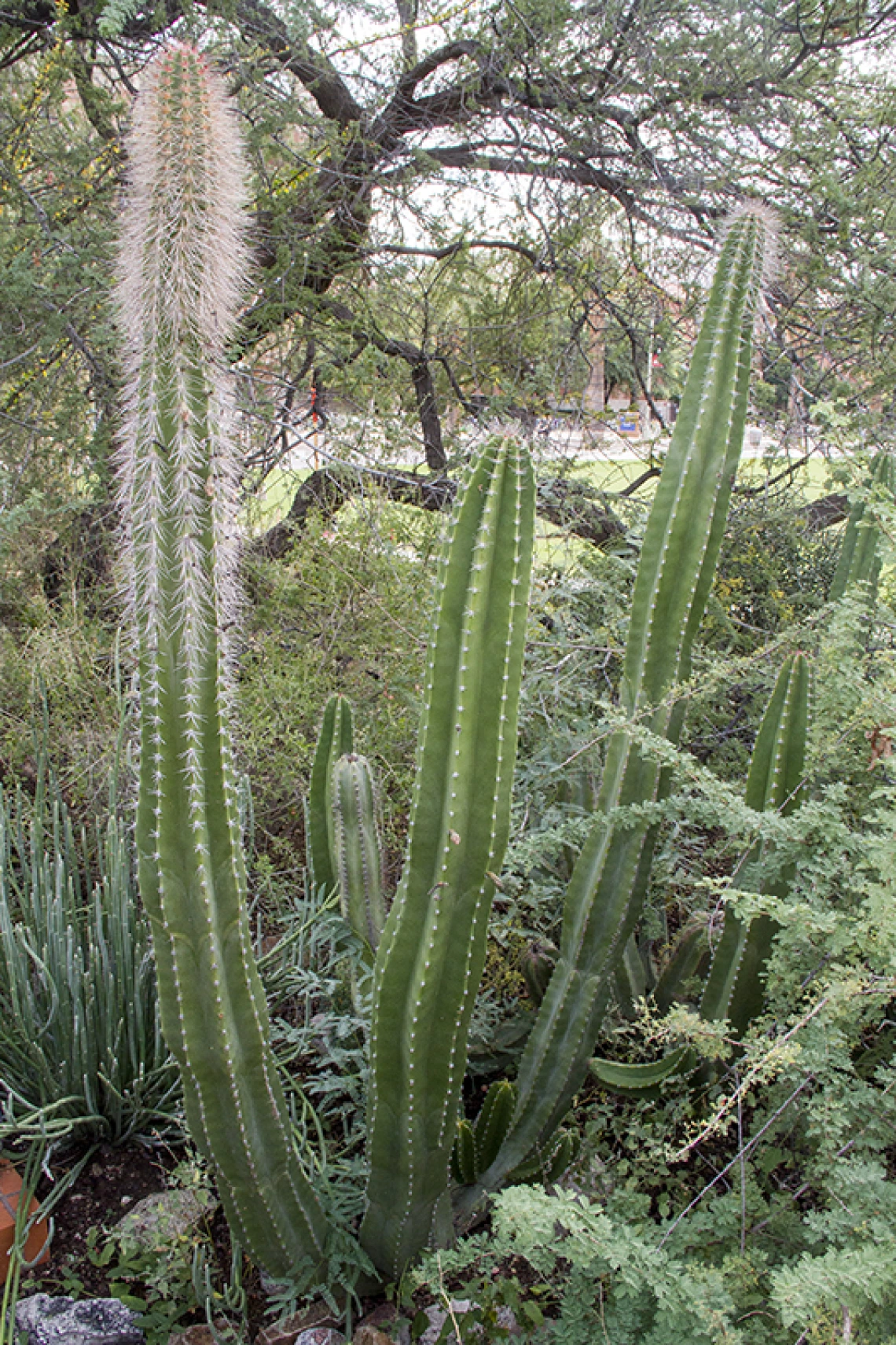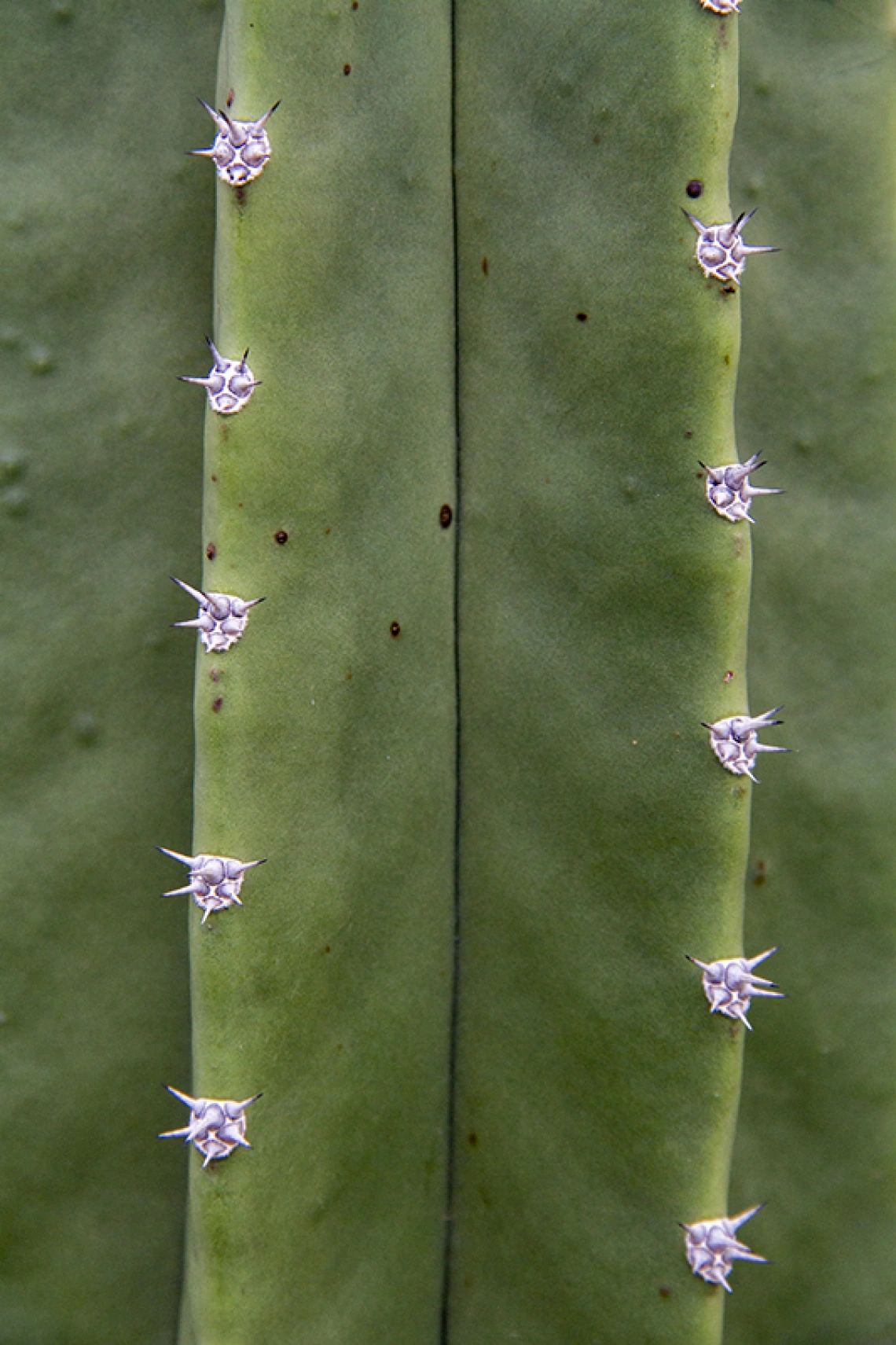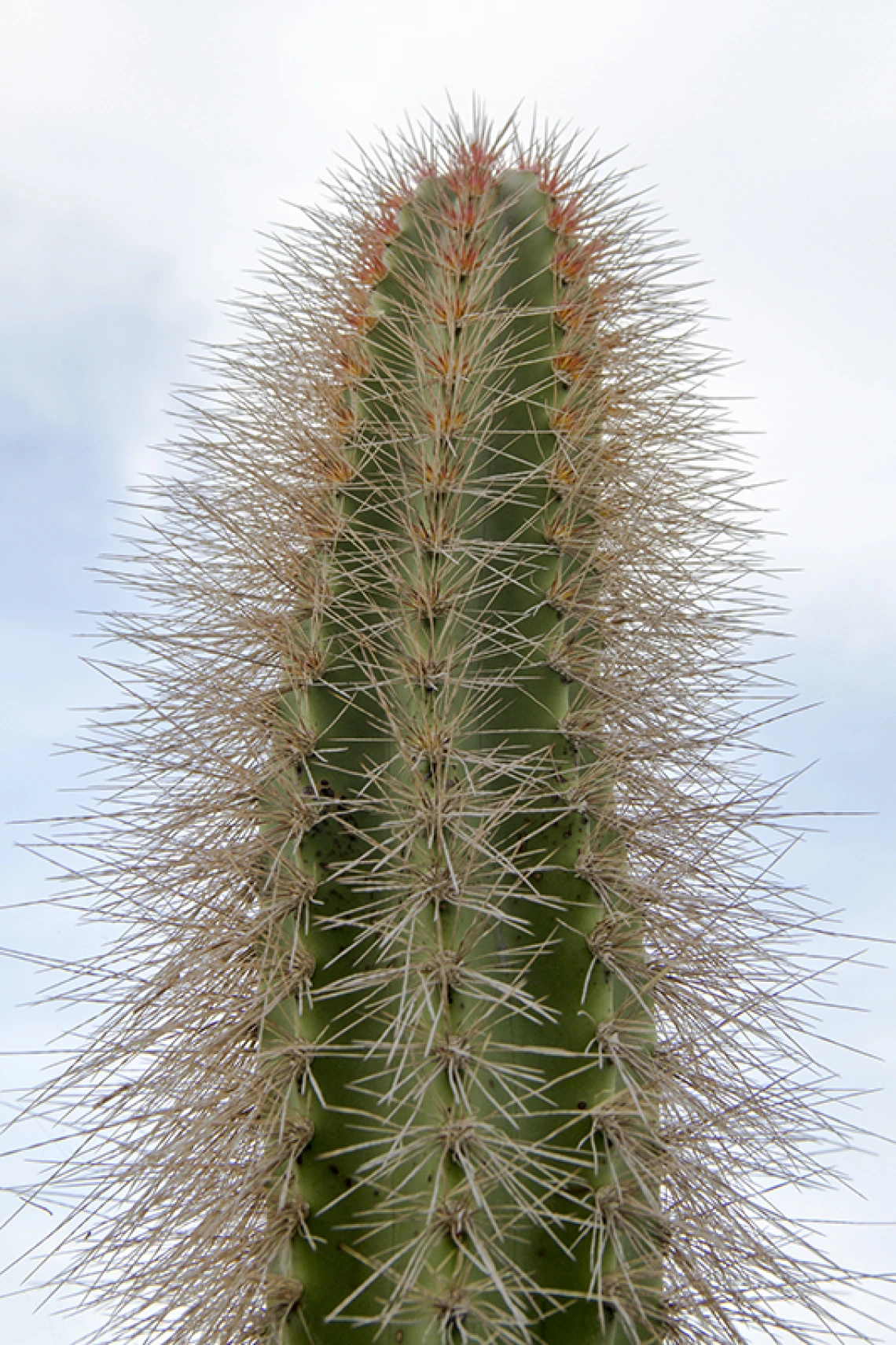Sonoran Native Plants Virtual Tour
Lophocereus schottii | Cactaceae | senita
Desert Ecology:
Mature, flower-producing stems are densely covered in long, bristly, gray spines . Pink nocturnal flowers emerge through the bristles, followed by small red fruit. Mutually beneficial relationship exists with a moth which pollinates the flowers and uses developing fruit for food for larvae.
Ethnobotany:
Mexican name borrowed from Indian name, sina. Senita roughly translates in Spanish to “little old woman”. The tipais used for treatment of diabetes, and used for food and was traded by the Seri, Tohono O’odham, Hiá ced O’ohdam, Eudeve, and River Pima.


